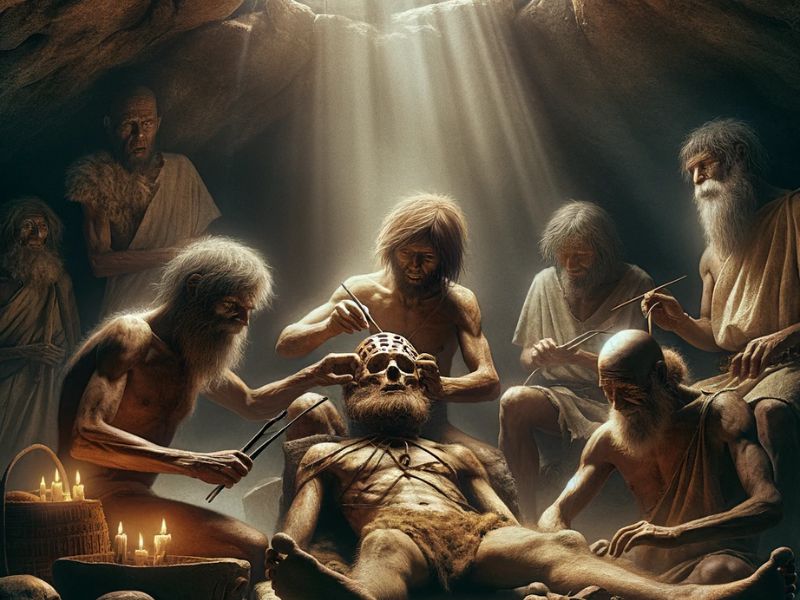
Unlocking the secrets of prehistoric medicine
A Journey Through Time to Discover the Origins of Medicine
Prehistoric Surgery
In prehistoric times, surgery was not an abstract concept but a tangible and often life-saving reality. Trepanation, performed as early as 5000 BC in regions like France, is an extraordinary example of such a practice. This technique, involving the removal of a portion of the skull, may have been used to alleviate neurological conditions such as epilepsy or severe headaches. The presence of healed traces around the openings suggests that patients not only survived but lived long enough for bone regeneration to occur. Beyond trepanation, prehistoric populations were skilled in treating fractures and dislocations. They used clays and other natural materials to immobilize injured limbs, demonstrating an intuitive understanding of the need to limit movement for proper healing.
Magic and Healers
At the heart of prehistoric communities, healers, often referred to as shamans or witches, played a crucial role. They were not just doctors but also bridges between the physical and spiritual worlds. They gathered herbs, performed basic surgical procedures, and provided medical advice. However, their skills extended beyond the tangible realm; they also employed supernatural treatments such as amulets, spells, and rituals to ward off evil spirits. In cultures like the Apache, healers not only healed the body but also the soul, conducting elaborate ceremonies to identify the nature of the illness and its treatment. These ceremonies, often attended by the patient’s family and friends, combined magical formulas, prayers, and percussion, reflecting a unique fusion of medicine, religion, and psychology.
Pioneers of Dentistry
Dentistry, a field we now consider highly specialized, already had its roots in prehistoric times. In Italy, approximately 13,000 years ago, the practice of drilling and filling teeth already existed, a surprising precursor to modern dental techniques. Even more impressive is the discovery in the Indus Valley civilization, where around 3300 BC, people already possessed sophisticated knowledge of dental care. Archaeological remains show that they were adept at drilling teeth, a practice that attests not only to their understanding of oral health but also their skill in manipulating small and precise instruments.
As we explore the roots of prehistoric medicine, we encounter a fascinating fusion of science, art, and spirituality. The limitations of medical knowledge were compensated for by a deep understanding of the natural environment and a strong connection to spiritual beliefs. The survival of practices such as trepanation and dental procedures through the millennia underscores not only the ingenuity of early civilizations but also their determination to heal and alleviate suffering. This journey into prehistoric medicine is not only a testament to our history but also a reminder of human resilience and ingenuity.
Sources


